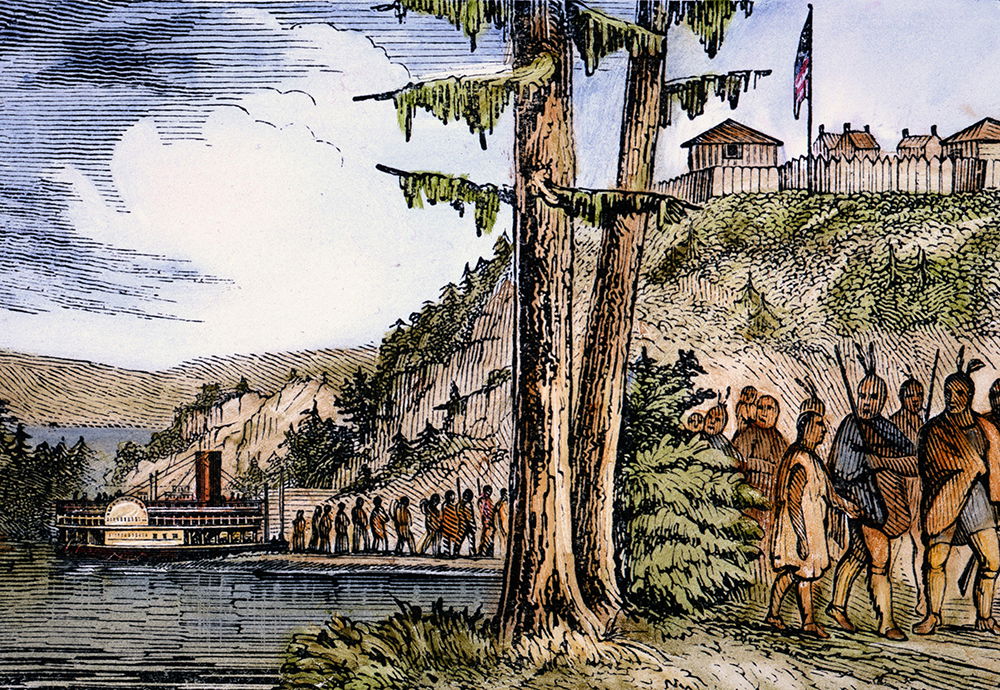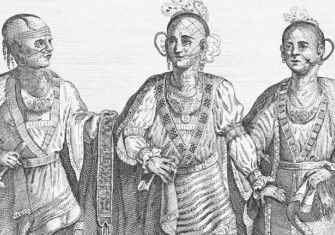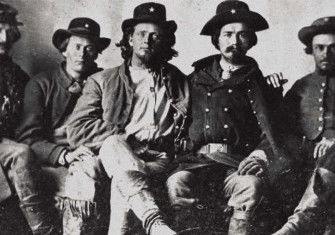The Trail of Tears
The Indian Removal Act was signed into law by President Andrew Jackson on 28 May 1830, forcing the migration of five Native American nations from their homelands.

Alexis de Tocqueville saw, in winter 1831, the Choctaw crossing the Mississippi at Memphis. Among them were the wounded and the sick, newborn babies, elderly people at the point of death. Snow had frozen hard on the ground; great blocks of ice rode in the river. ‘No cry, no sob, was heard among the assembled crowd; all were silent’, Tocqueville wrote. ‘Never will that solemn spectacle fade from my remembrance.’
What Tocqueville witnessed is remembered as ‘the trail of tears’: the forced migration of five Native American nations from their homelands in the American southeast to Oklahoma, some 800 miles away. It was triggered by the Indian Removal Act, signed into law by President Andrew Jackson on 28 May 1830.
The five tribes were the Cherokee, Chickasaw, Choctaw, Creek and Seminoles. Relentless colonial expansion had already pressed hard; between 1684 and 1819, the Cherokee signed 28 treaties that gave away more than 90 per cent of their territory. By 1830 Georgia and Alabama were claiming state jurisdiction over Native American lands. Mississippi and Tennessee followed suit. Jackson supported them. ‘My white children have extended their law over your country’, he told the Creeks. ‘You must be subject to that law.’
The Cherokee removal is the best documented. They were rounded up at gunpoint and driven into stockades. Behind them, their homes were looted and burnt, their graves robbed for silver. Conditions in the stockades were appalling; cholera and dysentery were rife. Worse hardships were ahead. Of 20,000 Cherokee, some 4,000 were likely killed in the removal, possibly twice that. One soldier, later a Confederate colonel, recalled: ‘I have seen men shot to pieces and slaughtered by thousands, but the Cherokee removal was the cruelest work I ever saw.’
In December 1838, Jackson’s successor, Martin Van Buren, wrote to Congress: ‘The measures … have had the happiest effects.’ The Cherokee ‘have emigrated without any apparent reluctance’.






